Презентация Week 3 Efficiency and Technical Progress

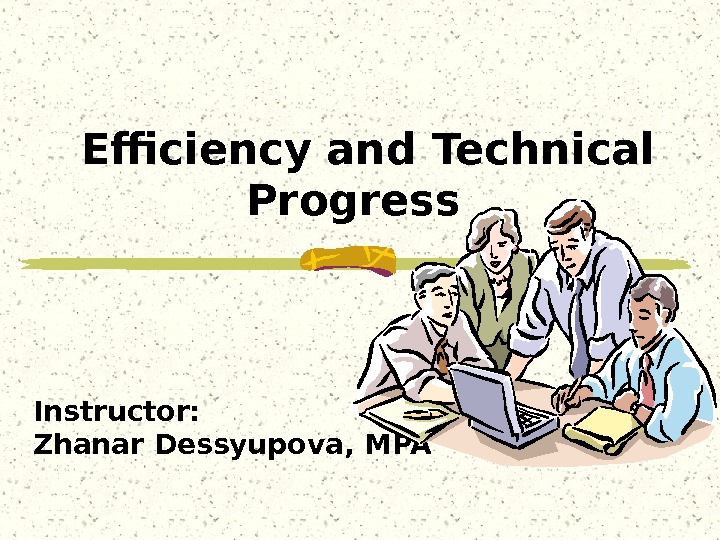

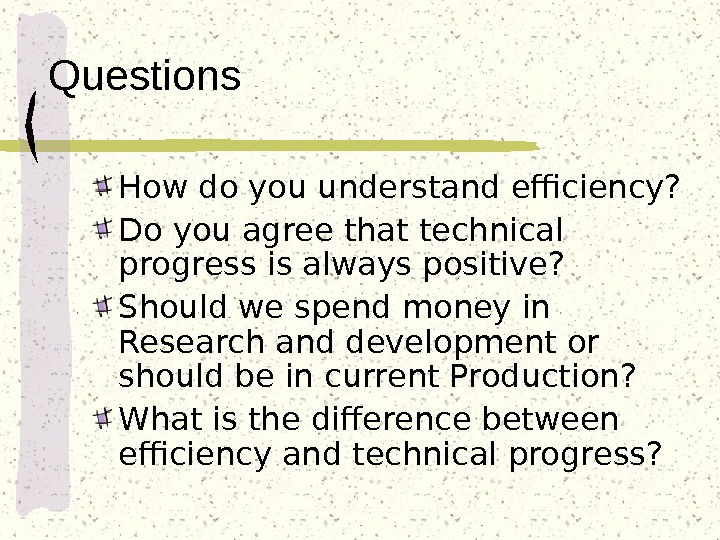
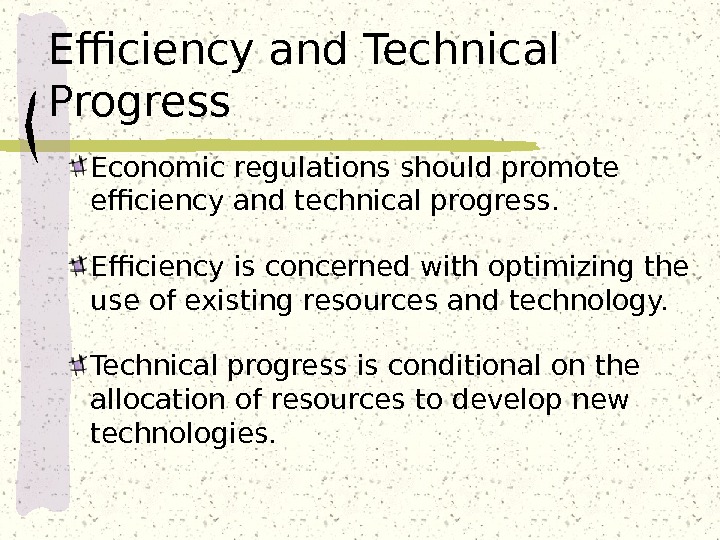
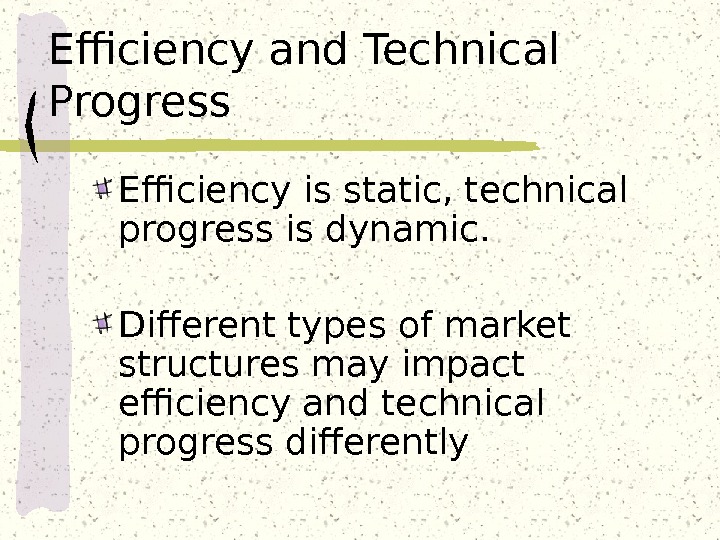
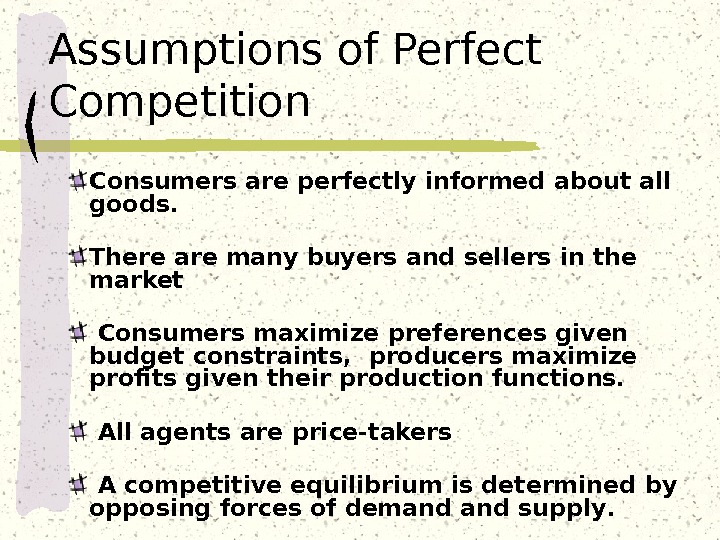
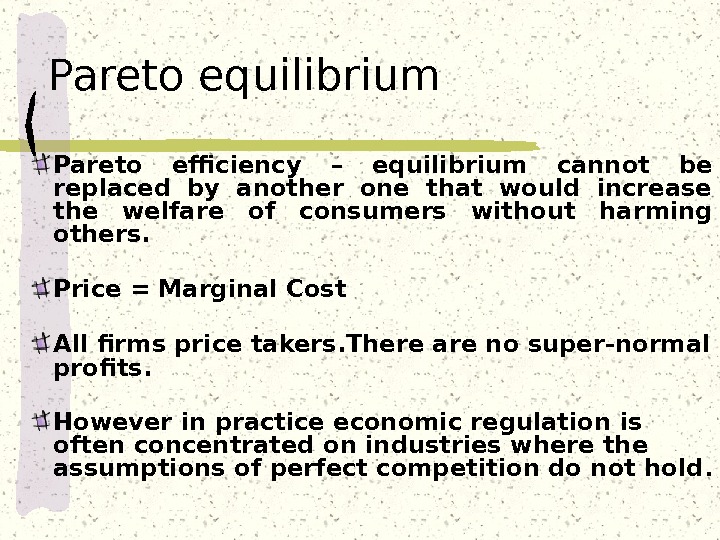
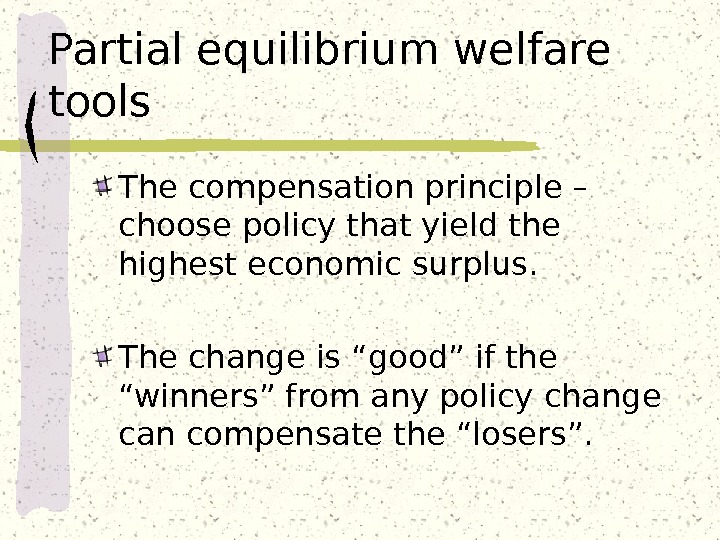
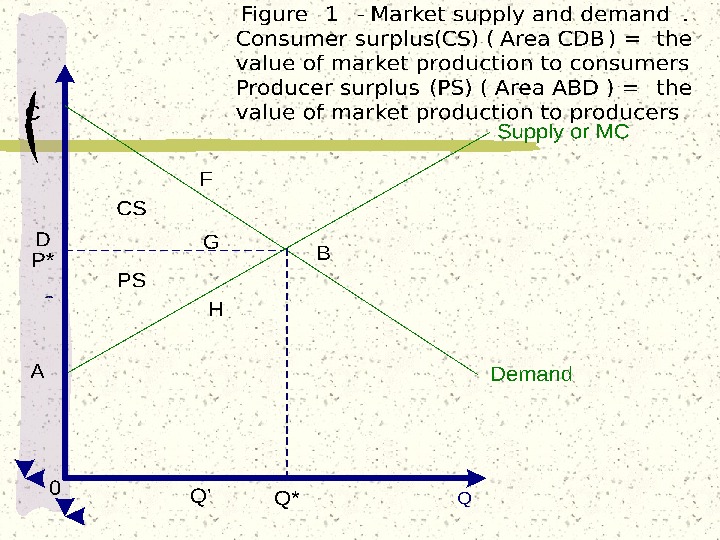

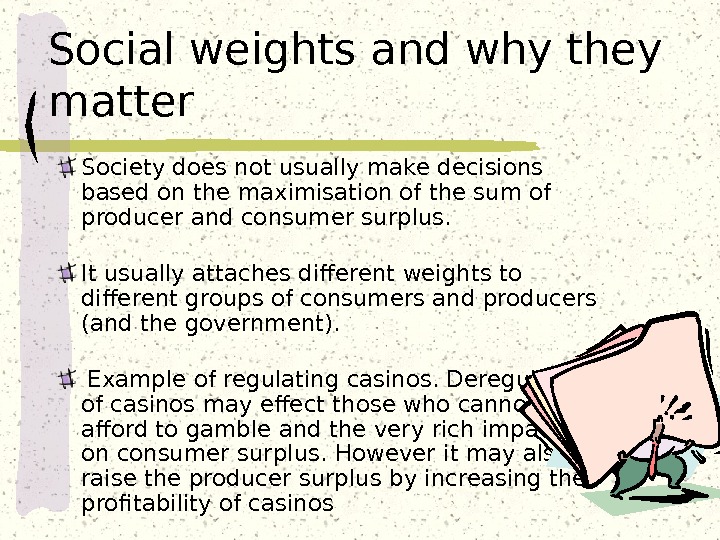



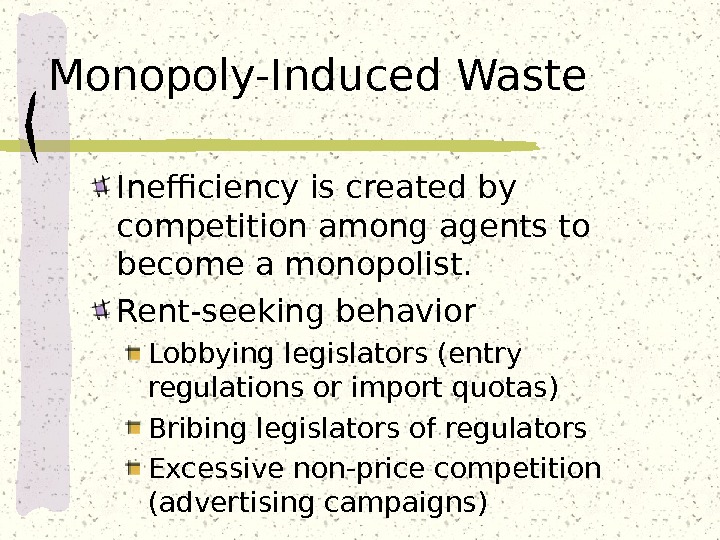



week_3_efficiency_and_technical_progress.ppt
- Размер: 320 Кб
- Количество слайдов: 18
Описание презентации Презентация Week 3 Efficiency and Technical Progress по слайдам
 Efficiency and Technical Progress Instructor: Zhanar Dessyupova, MP
Efficiency and Technical Progress Instructor: Zhanar Dessyupova, MP
 Major Topics Basic Definitions Assumptions of perfect competition Monopoly and Deadweight losses X-inefficiency Monopoly-Induced waste Types of research
Major Topics Basic Definitions Assumptions of perfect competition Monopoly and Deadweight losses X-inefficiency Monopoly-Induced waste Types of research
 Questions How do you understand efficiency? Do you agree that technical progress is always positive? Should we spend money in Research and development or should be in current Production? What is the difference between efficiency and technical progress?
Questions How do you understand efficiency? Do you agree that technical progress is always positive? Should we spend money in Research and development or should be in current Production? What is the difference between efficiency and technical progress?
 Efficiency and Technical Progress Economic regulations should promote efficiency and technical progress. Efficiency is concerned with optimizing the use of existing resources and technology. Technical progress is conditional on the allocation of resources to develop new technologies.
Efficiency and Technical Progress Economic regulations should promote efficiency and technical progress. Efficiency is concerned with optimizing the use of existing resources and technology. Technical progress is conditional on the allocation of resources to develop new technologies.
 Efficiency and Technical Progress Efficiency is static, technical progress is dynamic. Different types of market structures may impact efficiency and technical progress differently
Efficiency and Technical Progress Efficiency is static, technical progress is dynamic. Different types of market structures may impact efficiency and technical progress differently
 Assumptions of Perfect Competition Consumers are perfectly informed about all goods. There are many buyers and sellers in the market Consumers maximize preferences given budget constraints , p roducers maximize profits given their production functions. All agents are price-takers A competitive equilibrium is determined by opposing forces of demand supply.
Assumptions of Perfect Competition Consumers are perfectly informed about all goods. There are many buyers and sellers in the market Consumers maximize preferences given budget constraints , p roducers maximize profits given their production functions. All agents are price-takers A competitive equilibrium is determined by opposing forces of demand supply.
 Pareto equilibrium Pareto efficiency – equilibrium cannot be replaced by another one that would increase the welfare of consumers without harming others. Price = Marginal Cost All firms price takers. There are no super-normal profits. However in practice economic regulation is often concentrated on industries where the assumptions of perfect competition do not hold.
Pareto equilibrium Pareto efficiency – equilibrium cannot be replaced by another one that would increase the welfare of consumers without harming others. Price = Marginal Cost All firms price takers. There are no super-normal profits. However in practice economic regulation is often concentrated on industries where the assumptions of perfect competition do not hold.
 Partial equilibrium welfare tools The compensation principle – choose policy that yield the highest economic surplus. The change is “good” if the “winners” from any policy change can compensate the “losers”.
Partial equilibrium welfare tools The compensation principle – choose policy that yield the highest economic surplus. The change is “good” if the “winners” from any policy change can compensate the “losers”.


 Social weights and why they matter Society does not usually make decisions based on the maximisation of the sum of producer and consumer surplus. It usually attaches different weights to different groups of consumers and producers (and the government). Example of regulating casinos. Deregulation of casinos may effect those who cannot afford to gamble and the very rich impacting on consumer surplus. However it may also raise the producer surplus by increasing the profitability of casinos
Social weights and why they matter Society does not usually make decisions based on the maximisation of the sum of producer and consumer surplus. It usually attaches different weights to different groups of consumers and producers (and the government). Example of regulating casinos. Deregulation of casinos may effect those who cannot afford to gamble and the very rich impacting on consumer surplus. However it may also raise the producer surplus by increasing the profitability of casinos
 How to improve social welfare in Natural Monopoly Industries Government ownership e. g. USPS Regulation of prices e. g. Electric Utilities Introduction of competition e. g. Telephony
How to improve social welfare in Natural Monopoly Industries Government ownership e. g. USPS Regulation of prices e. g. Electric Utilities Introduction of competition e. g. Telephony
 Other types of market structure with deadweight losses Monopsony – where a single buyer drives down the price it pays and the quantity it buys. Oligopoly – the intermediate case between perfect competition and monopoly where a small number of firms operate in a market with some ability to raise prices and reduce industry output. Oligopsony – where small groups of buyers drive down price paid and quantity bought.
Other types of market structure with deadweight losses Monopsony – where a single buyer drives down the price it pays and the quantity it buys. Oligopoly – the intermediate case between perfect competition and monopoly where a small number of firms operate in a market with some ability to raise prices and reduce industry output. Oligopsony – where small groups of buyers drive down price paid and quantity bought.
 X-Inefficiency X-inefficiency (Leibenstein, 19 5 6) occurs when firms do not minimise the costs of producing their output. It is the difference between efficient behavior of firms assumed or implied by economic theory and their observed behavior in practice. X-inefficiency occurs due to lack of competition or incentive to minimise costs within firms. Monopolies may be particularly prone to such inefficiency.
X-Inefficiency X-inefficiency (Leibenstein, 19 5 6) occurs when firms do not minimise the costs of producing their output. It is the difference between efficient behavior of firms assumed or implied by economic theory and their observed behavior in practice. X-inefficiency occurs due to lack of competition or incentive to minimise costs within firms. Monopolies may be particularly prone to such inefficiency.
 Monopoly-Induced Waste Inefficiency is created by competition among agents to become a monopolist. Rent-seeking behavior Lobbying legislators (entry regulations or import quotas) Bribing legislators of regulators Excessive non-price competition (advertising campaigns)
Monopoly-Induced Waste Inefficiency is created by competition among agents to become a monopolist. Rent-seeking behavior Lobbying legislators (entry regulations or import quotas) Bribing legislators of regulators Excessive non-price competition (advertising campaigns)
 Technical Progress Schumpeter famously argued that monopoly was good for innovation because the competition for monopoly encouraged investment in innovation. Research and Development expenditure can take a number of different forms and involves different stages: Basic research (knowledge for own sake) A pplied research (director toward particular product) Invention (discovery of new knowledge) Development Diffusion
Technical Progress Schumpeter famously argued that monopoly was good for innovation because the competition for monopoly encouraged investment in innovation. Research and Development expenditure can take a number of different forms and involves different stages: Basic research (knowledge for own sake) A pplied research (director toward particular product) Invention (discovery of new knowledge) Development Diffusion
 Thank you for attention!!!!
Thank you for attention!!!!
 Assignment Divide in 3 groups In group, think about introduction of new legislature in any sphere Justify the necessity of your law and present advantages for the society
Assignment Divide in 3 groups In group, think about introduction of new legislature in any sphere Justify the necessity of your law and present advantages for the society

